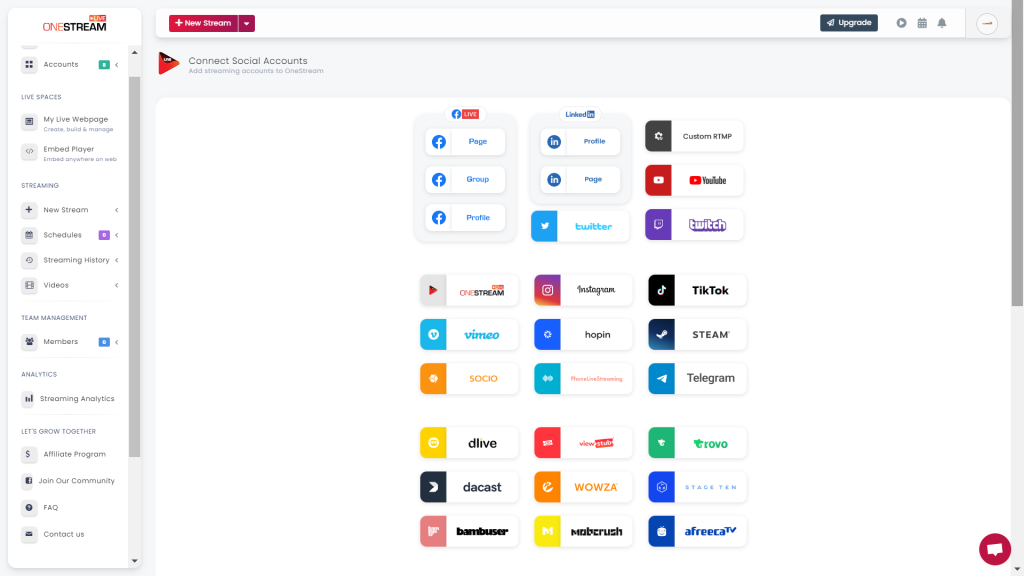5 Breakthrough Web Live Streaming Technologies to Keep an Eye On
No doubt you’re familiar with live streaming – webcasting real-time video to an audience over the internet. It’s been around for a while, and there are a number of well-established technologies available to help you do it.
Quick Links
But in recent years, live streaming has taken off in a big way. Soaring demand from viewers has led to rapid innovation in the space, spawning a host of new (and often experimental) technologies.
If you’re looking to stay ahead of the curve in web live streaming, here are five breakthrough technologies to keep your eye on.
1. Low-latency live streaming
Low-latency live streaming is a game-changer for many types of applications. It enables real-time interaction between the streamer and the viewer, making it perfect for things like e-learning, customer support, and online gaming.
The key to achieving low latency is to reduce the time it takes for the video signal to travel from the encoder to the viewer. This can be done in a number of ways, including using specialized protocols (like WebRTC), deploying dedicated hardware, or using a content delivery network (CDN) with low latency streaming capabilities.
2. Cloud-based live streaming
Cloud-based live streaming solutions are becoming increasingly popular, due to the flexibility and scalability they offer. With a cloud-based solution, you can stream to any number of viewers without having to worry about overloading your server or bandwidth capacity.
Additionally, many cloud-based solutions come with built-in features like live transcoding, which enables you to automatically adjust the bitrate and resolution of your stream based on the viewer’s connection speed. This ensures that everyone has a smooth, uninterrupted viewing experience – even if they’re on a mobile device with a slow data connection.
3. OneStream Live

OneStream Live is a next-generation live streaming platform that enables you to stream to multiple destinations simultaneously – without the need for expensive hardware or software.
OneStream’s unique ‘stream once, distribute everywhere’ approach reduces your costs and complexity, while giving you the flexibility to reach any audience, on any device. OneStream is also the only live streaming platform that supports adaptive bitrate streaming, meaning your viewers always get the best possible quality – even if their internet connection is poor.
4. 360-degree live streaming
360-degree live streaming gives viewers a fully immersive experience, letting them feel like they’re right in the middle of the action. This technology is made possible by special cameras that capture an entire 360-degree field of view.
To watch a 360-degree live stream, viewers can use a virtual reality headset (like Oculus Rift or HTC Vive), or simply move their phone or mouse to look around the scene. This interactive format is perfect for events like concerts, sports games, and conferences – giving viewers a front-row seat no matter where they are in the world.
5. Augmented reality live streaming
Augmented reality (AR) live streaming takes things one step further than 360-degree live streaming, by overlaying computer-generated images and information on top of the live video feed. This can be used for a number of different purposes, including providing viewers with additional information about the scene (e.g. labels, stats, or directions), or adding virtual elements to enhance the experience (e.g. special effects, 3D objects, or animated characters).
Microsoft’s HoloLens is one of the most popular AR platforms currently available, but there are a number of other options to choose from, including Epson Moverio and Google Glass.
These are just a few of the most exciting new live streaming technologies to keep an eye on. As the live streaming industry continues to grow and evolve, we can expect to see even more innovative solutions that make it easier than ever to reach a global audience in real-time.
What Is WooCommerce Product Slider and Why Your Store Needs It
Why Do Product Images Matter So Much in Online Stores? When someone visits an online store the…
0 Comments9 Minutes
How to Streamline Your Customers’ Shopping Experience?
The goal for any online store is to make shopping as smooth as possible. When visitors move…
0 Comments8 Minutes
Strengthening Brand-Customer Relationships Through Gamified Loyalty Programs
Creating lasting connections with customers has become increasingly vital as the marketplace grows…
0 Comments6 Minutes
How to Use SEO and SEA Together in Search Engine Marketing
In digital marketing, search engine marketing (SEM) plays a critical role in improving online…
0 Comments10 Minutes
Content Marketing Growth Hacks: Real Shortcuts to Drive Traffic
Are you still lagging in content marketing? Sticking to these old strategies seems…
0 Comments10 Minutes
How to Build a Strong Local Following Using Social Media Marketing
In the days of likes, shares, and stories, local businesses have a golden opportunity to create…
0 Comments9 Minutes
Why WooCommerce is the Best Choice for Your Online Store?
WooCommerce stands out as a top option for anyone looking to build an online store. This platform…
0 Comments8 Minutes
How to Use AI-Powered SEO Tools for WordPress eCommerce
SEO is a critical factor in the success of any e-commerce WordPress store. As competition…
0 Comments11 Minutes








